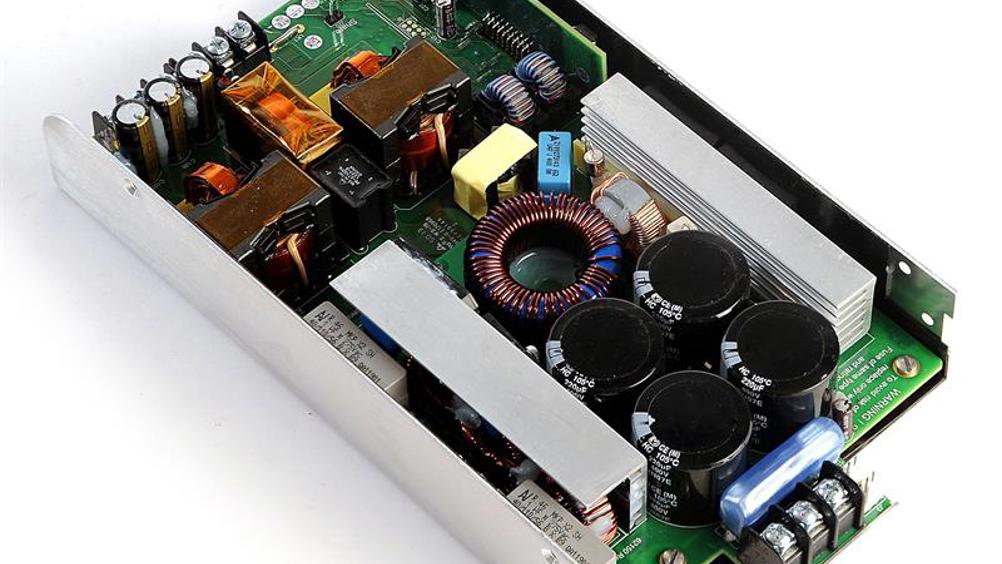In the same fashion, the serial configuration of power supplies can be used to meet higher voltage requirements. In recent years, with the evolution of laser diodes, we have seen this more and more in the medical and industrial segments.
Challenges with paralleling
One of the main challenges when you operate more than one control loop in parallel is to ensure that both power trains will share the load evenly. If not, you may have one or more units working in an overload condition, with the other(s) running in a low power mode. This will result in a thermal increase on the dominant unit, leading to increased temperatures and a reduction in reliability.
Power supplies that are suitable for paralleling will have had the possibility considered during their design phase and, as such, should have either a passive or active current share method of paralleling. Active current share is where one unit is designated as a master and controls how much current the 'slaves' in the system should be supplying. While there is an advantage of being able to control each supply more accurately in terms of the load current, it adds complexity to the user wiring.

Alternatively, the passive method of current sharing means the user needs only to parallel the outputs and the power supply will control its own mode of operation. For this type of control, the most common method is current share by droop. Here, the power supplies will trim back their output voltage as the load current they supply increases. The resulting effect is that one unit will not dominate by providing too much current to the load. While this approach is advantageous in terms of wiring, it does add load regulation to the output voltage and requires some accurate setting of voltages prior to insertion of the power supply into the system.
If you are paralleling power supplies to meet an N+1 redundancy system requirement, then you should also note that, irrespective of the current sharing method invoked in the design, you will need to isolate the outputs from each other. This will ensure that, if one output goes short circuit, it will not pull the entire supply bus voltage down. However, if your need to parallel is to implement an N+1 redundant system, then none of these approaches has an advantage over the other and the choice can be left to the designer.
One notable positive aspect of paralleling is that you do not have to be concerned about the isolation of outputs when using them in this configuration, as you will be implementing a common ground in your application.
Serial connection

A series configuration can only be achieved if all the power supply outputs are floating. If this is not the case, you will create a short circuit on the output and only one unit will supply the load (see fig 3).

If the outputs are not floating, then when the units are used in a series configuration, you will create a short circuit on the output of the unit that is closest to the ground reference.
You should also ensure that each power supply has the same current rating, or you will be limited to the load current of the lowest part in the chain. If this part were to enter a current limit protection mode on its own, there will be a strong possibility that this part will be damaged by adjacent units.
One further important requirement is the isolation requirements as you move to higher voltages. According to IEC60950, creepage is defined as the shortest distance between two conductive parts, or the distance between a conductive part and the electrical enclosure of the equipment, measured through air. From the same standard, we have clearance defined as the shortest path between two conductive parts, or between a conductive part and the electrical enclosure of the equipment, measured along the surface of the insulation. While it is never easy to detail these requirements in a short few sentences, it is fair to say that, as your output voltage goes up, then so do the creepage and clearance requirements. This must be also be considered by the end user, especially if the Safe Electrical Low Voltage (SELV) limit of 60V DC (or 42V DC in Canada) is exceeded.
Power supplies must meet creepage and clearance requirements in order to comply with safety certification requirements. If a supply has certification, then it will meet the requirements for use as a standalone unit. However, if you start to stack up the voltages and exceed the maximum SELV, then there are a few more items that you may need to discuss with your power supply vendor.
Conclusion
Both parallel and series configuration of power supplies can be implemented safely and effectively if your choice of supply is designed suitably. When choosing your design, be sure to engage with the technical support team of your chosen vendor. Any reputable power supply company will be able to offer you concise and comprehensive support for you to implement these into your final solution.
Author profile:
Shane Callanan is director of applications engineering with Excelsys.
Paralleling points Here are some things to look out for when paralleling your power supply.
|







